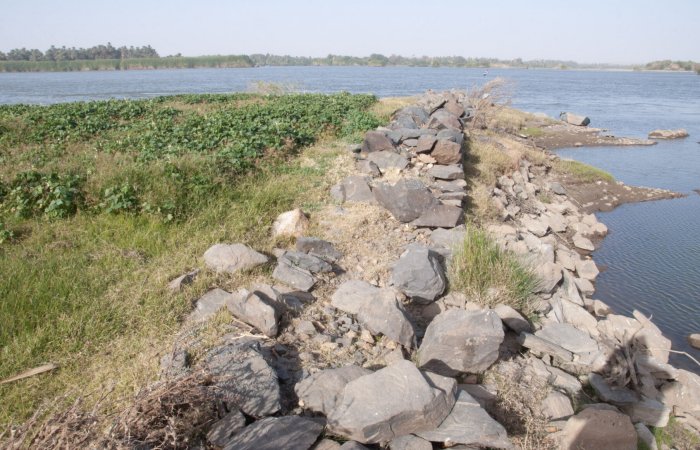Conny Waters – AncientPages.com – An international team of researchers who discovered a vast network of stone walls along the River Nile in Egypt and Sudan say these mᴀssive “river groins” reveal an exceptionally long-lived form of hydraulic engineering in the Nile Valley, and shed light on connections between ancient Nubia and Egypt.
The findings of this study—conducted as part of the British Museum’s Amara West Research Project, in collaboration with the Sudanese National Corporation for Antiquities and Museums—have been published in the journal Geoarchaeology.

Credit: University of Manchester
Lead author, Dr. Matthew Dalton of The University of Western Australia, said, “We used satellite imagery, drone and ground surveys, as well as historical sources, to locate nearly 1,300 river groins between the 1st Cataract in southern Egypt and the 4th Cataract in Sudan.”
Hundreds of these groins are now submerged beneath the Aswan High Dam reservoir, and were relocated in 19th century travelers’ diaries, a 200-year-old map, and archives of aerial pH๏τographs, including some taken by the Royal Air Force in 1934.
Many river groins are now located in the desert, within ancient, dry Nile channels. “We know that reaches of the Nile in Sudan had multiple channels earlier in the Holocene and many of them dried out when river flows decreased due to climate change,” said study co-author Professor Jamie Woodward of The University of Manchester.
The team used radiocarbon and luminescence dating techniques to establish that some walls in these ancient channels were built over 3,000 years ago.
These walls trapped fertile silts during the Nile’s annual inundation, and crops could be grown on this reclaimed land without artificial irrigation.
Radiometric dating suggests that this form of landscape engineering was first undertaken by the region’s indigenous Nubian communities, as well as the inhabitants of towns established later by the ancient Egyptian state.
“From speaking with farmers in Sudanese Nubia, we also learnt that river groins continued to be built as recently as the 1970s, and that the land formed by some walls is still cultivated today,” Dr. Dalton said. “This incredibly long-lived hydraulic technology played a crucial role in enabling communities to grow food and thrive in the challenging landscapes of Nubia for over 3000 years.”
The researchers also identified much larger stone walls within the Nile, some up to five meters thick and 200 meters long—barrages which would have directed river flow and aided boat navigation through treacherous Nile rapids.
Dr. Dalton said, “these monumental river groins helped to connect the people of ancient Egypt and Nubia by facilitating the long-distance movement of resources, armies, people and ideas up and down the Nile.”
Dr. Neal Spencer, deputy director at the Fitzwilliam Museum (University of Cambridge) and Director of the Amara West Research Project, notes, “this study shows how interdisciplinary research can provide insights into enduring traditions, technologies and agricultural practices within Nubia, balancing the inherently biased information in the ancient Egyptian textual record.”
The study was published in the journal Geoarchaeology
Written by Conny Waters – AncientPages.com Staff Writer





